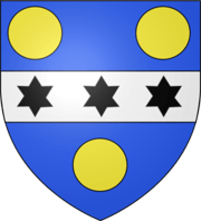Twin City Cherbourg-en-Cotentin

Cherbourg is a very old town that looks back on a chequered history. The castle probably stands on the former site of a Roman camp called “Coriallo”. It is one of the period’s most important castles. In 1450, the French conquered Cherbourg and in 1688 the castle and its ramparts were razed to the ground. In 1783, Louis XVI decided to build a military port, which was opened in 1813. However, it was steadily developed further and by 1853, Cherbourg boasted the world’s largest artificial anchorage. Cherbourg became known around the world due to the Allies’ Normandy landing on the coast near the town, followed quickly by the end of World War II.
Against the background of this war, as an effort to promote grass-roots inter-cultural understanding, the first town twinning projects were launched in 1947. In 1951, 50 mayors of German and French towns founded the “Council of European Municipalities”, since 1984 known as “Council of European Municipalities and Regions” (CEMR).
The twinning of Cherbourg and Bremerhaven also has its roots in these efforts for reconciliation. It exists since 29 June 1960, making Cherbourg Bremerhaven’s oldest twin town.
This brief historical outline makes it clear how much life in Cherbourg too was and is dominated by the port, the sea and shipping. Just like Bremerhaven, Cherbourg is a major sea port. Shipbuilding accounts for many jobs – some 2,920 people work in the development and construction of submarines alone.
Since January the first, 2016 our partner city Cherbourg-Octeville exists as part of the new commune "Cherbourg-en-Cotentin". Already in 2000 there was a first merger of Cherbourg and Octeville to Cherbourg-Octeville. In addition, the municipalities Équeurdreville-Hainneville, La Glacerie, Querqueville and Tourlaville have also been added.
The new municipality has a total of around 81,000 inhabitants. The area covers 1,181 km². Cherbourg-en-Cotentin is located in the north-west of France in Normandy, in the department Manché directly on the Channel. Distance to Bremerhaven is about 1,131 Km.
Many people are employed in the town’s large scientific institutions such as the Institut Universitaire de Technologie, Institut des Techniques de la Mer, École d’Ingénieurs, École Atomique and Lycées as well as major industrial companies such as the Direction des Contructions Navales, Chantiers Mécaniques de Normandie, JMV Industries.
Sadly, like Bremerhaven, Cherbourg-en-Cotentin does not enjoy full employment, with an unemployment rate of some 10%.
Major ferry routes operate all year round from Cherbourg-Octeville, e.g. daily services to Poole and Portsmouth. Almost all year round there is a ferry 3 times a week to Rosslare. Another ferry sails to Dublin.
The traffic-free shopping centre is ideal for a stroll through the town centre. Walking past the flower-decked Town Hall, you come to the theatre, which survived World War II unscathed.
In 2000, Europe’s largest cylindrical aquarium opened in Cherbourg-Octeville. “La Cité de la Mer” invites its visitors to experience the world of divers – from the earliest diving methods to today’s latest diving techniques and equipment. Visitors can journey into the colourful and fascinating underwater world at a depth of 2,000m. Although it is hard to imagine, living creatures are found even at this depth.
The marina in Cherbourg-Octeville provides berths for a large number of yachts and motor boats.
The well-kept parks are oases for walking, enjoying nature and relaxing.
Cherbourg-Octeville is also twinned with these towns:
Poole in England since 1977
Coubalan in Senegal since 1995
Address
Hotel-de-ville20 Place Napoléon
50100 Cherbourg-en-Cotentin
Contact
Estelle Tollemer
Relations Internationales
+33 02 33 87 88 89
+33 02 33 87 88 88
mairie@ville-cherbourg.fr
